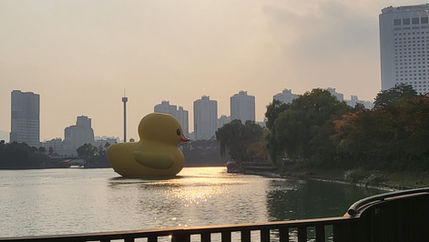Rubber Duck Project Seoul 2022
러버덕 프로젝트 서울 2022
The Rubber Duck, which graced Seoul's Seokchon Lake in 2014 and again in 2022, left a profound impression on the South Korean public with its towering 16.5-meter height and substantial 7,000-kilogram weight. To those weary from the prolonged pandemic and economic downturn, the artist intended for this colossal yellow rubber duck floating on the lake to offer an opportunity for 'healing' by sharing joy and hope, and mending emotional wounds. By participating in the 2022 Rubber Duck Project, we contributed to conveying warm comfort and positive energy to South Korean society, going beyond a simple exhibition. Our involvement included the installation of the massive Rubber Duck in the unique setting of Seokchon Lake, enabling numerous citizens to experience hope and delight through this artwork. Throughout the Rubber Duck's stay on Seokchon Lake, countless individuals visited to witness this extraordinary sight, and the Rubber Duck transcended its status as mere art, becoming a symbol that conveyed a message of hope and positivity to everyone.
Artist Florentijn Hofman
Period 2022.9.30 ~ 2022.10.31
Organizer Daehong Communications Inc., BEBIG
Location Seokchon Lake&Lotteworldtower
Host Lotte Dpt&corporation, Songpa-gu office
Production Rubber Duck 18m, MD, 9ea photo zone






















